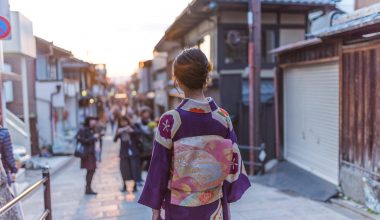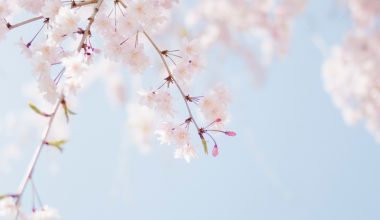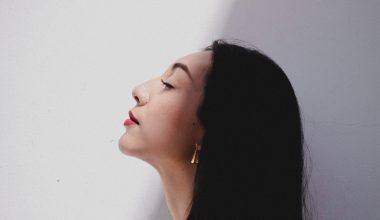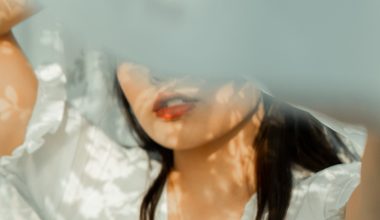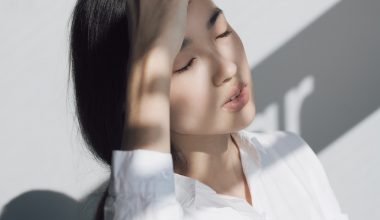Hada Labo Gokujyun Hyaluronic Lotion is a cult skincare product which many people absolutely love. It is considered a holy grail item by many and I’ve written about the range in great detail before, as it is incredibly effective for so many people. However like any product, it doesn’t always work for everyone and some people experience Hada Labo reactions (myself included). And while I’m sure this only happens for a small number of us, it can be incredibly disappointing and sometimes helpful just to know that you’re not alone!
Please note: This post contains affiliate links. For more information, see my disclosures here.
Introduction
I wanted to love this product so much, that I spent hours researching and learning about others experiences to try and understand common Hada Labo reactions and potential triggers. In my mission to understand my own reactions, I thought it might be helpful to share everything I’ve discovered. I’m not a dermatologist or professional, so this guide is based on my own experiences and those I’ve found described by others online (sources below). I’m still learning, so if you have any insights to share, I’d love to hear from you in the comments!
If you’re experiencing a reaction from using Hada Labo Gokujyun Hyaluronic Lotion, I’m with you and really hope this guide might help you identify what is causing problems and maybe even help correct them. If you’re looking for an alternative product, I’ve also included a bunch of recommendations below.
Potential Hada Labo Reactions
There are a wide range of potential Hada Labo reactions, some of them instant and others that develop over time. In my personal experience, my skin had an incredible glow for the first few days, which unfortunately developed into the following unwanted reactions over time.
1. Redness and inflammation
I’ve seen many people describe that they experience redness and inflammation after using Hada Labo Gokujyun Hyaluronic Lotion. This seems to be most commonly described as red patches, especially on the cheeks with an appearance like sunburn or rosacea that can take a long time to fade. For some people it flares up immediately, for others it is triggered by applying other products over the top. I personally experienced red patches high on my cheeks, with a slightly pink complexion across my whole face.
2. Stinging and increased sensitivity
Some others experience a stinging sensation after applying the lotion to their skin. Many people find that other products applied afterwards (such as moisturiser) start to sting, even if they’ve never caused this feeling before. This seems to range from a gentle tingling, through to an intense burning feeling. This increased sensitivity could also be due to a compromised moisture barrier. I personally experienced stinging when applying my usual moisturiser after Hada Labo, which started as a tingle on the first day and developed into an intense burn after a few days of use. As with any skincare product, if it burns or stings upon application, rinse it off immediately and discontinue use.
3. Bumpy skin texture
Some people seem to experience a change in their skin texture, with groups of closed comedones or small raised red bumps forming in areas such as the forehead and cheeks. These even seem to happen in areas where people have never been breakouts or skin issues before. A few suspect the product could have potentially exacerbated milia too. I personally experienced an area with a slightly bumpy texture appearing on my forehead.
4. Acne breakouts
Many people report acne breakouts as a common Hada Labo reaction (from whiteheads through to cystic acne) especially in areas where they’ve never had them before, such as high on the cheeks and neck. I’ve seen that some people have trialled the product on multiple occasions to determine that it is definitely the culprit of these breakouts. In my experience, I woke up the morning after my first use with some out-of-character acne in unusual areas.
5. Dry and itchy skin
While the lotion is designed to improve hydration, some people experience the opposite effects. Depending on climate and how it is used (more on this below) for some people the product results in drier and flakier skin, itchiness around the eyes and it can even trigger dermatitis. My personal experience was some itchiness around the eyes during the day.
Potential Ingredient Sensitivities
1. Hyaluronic Acid: Multiple Forms
The key ingredient in Hada Labo Gokujyun Hyaluronic Lotion is hyaluronic acid, which comes in many different forms and has many different names. The three included in this lotion are hydrolyzed hyaluronic acid (nano hyaluronic acid), sodium acetylated hyaluronate (super hyaluronic acid) and sodium hyaluronate (a derivative). Just one of these or the combination of all three, can cause reactions for some. Myself and many others experience no problems with products which contain only sodium hyaluronate (such as Neutrogena Hydro Boost Water Gel) but then have strong reactions to the combination present in Hada Labo lotions. Some people can even use the Hada Labo Gokujyun Hyaluronic Foam Face Wash, but not the lotions from the same series.
2. Hyaluronic Acid: Molecular Weight
The different sizes of hyaluronic acid molecules are usually categorised into two groups: high molecular weight hyaluronic acid (HMWHA) and low molecular weight hyaluronic acid (LMWHA). Those with a high molecular weight, tend to sit on the skin surface, focus more on the outer layer and are considered non-irritating. Those with a low molecular weight, can penetrate more deeply but can also trigger an inflammatory reaction. They can have the adverse effect of carrying unwanted ingredients and bacteria deep down into the skin. Many products (like Hada Labo) combine these different weights in a single product, so they can penetrate deeply into different layers of skin. Many people suspect this low molecular weight hyaluronic acid is the cause of their irritation with this product.
3. Hyaluronic Acid: Strength
Another factor is how much hyaluronic acid is in a product. Some people have problems with products that predominately contain hyaluronic acid (like Hada Labo) but have no problems with products where it appears further down the ingredient list. Some people suspect that their skin just can’t handle so much hyaluronic acid.
4. Butylene Glycol
The second ingredient listed is butylene glycol, which is a type of alcohol in the glycol family. While it is a common ingredient in skincare, it can potentially clog pores and irritate skin for some people. Irritation can potentially be exacerbated when the product is applied and then covered, or used on broken skin. If you are sensitive to butylene glycol, the lighter product variation Hada Labo Gokujyun Hyaluronic Lotion Light does not contain butylene glycol. Some people report that while the regular version didn’t work for them, this light version did.
5. Methylparaben
Parabens are a group of preservatives that are rather controversial in skincare, with many conflicting studies. They used to be common in products but in the last decade they have come into question and are appearing less and less in formulations. While methylparaben is generally considered non-irritating, some people report allergic reactions, often in the form of dermatitis.
Potential Usage Triggers
1. Climate
Hyaluronic acid is a humectant and works by drawing water to the skin. If you live in a humid environment, it will absorb this moisture from the air. However if you live in a drier climate, it will draw moisture from deeper levels of your skin instead, which can then evaporate and leave skin feeling drier. Some people find the lotion less effective in dry climates and discontinue use as it can make skin feel tight and uncomfortable. Others combat this by using a humidifier at home or only using the product seasonally. It doesn’t hurt to also ensure you are hydrated and drinking plenty of water too.
2. Applying to dry skin
Hada Labo Gokujyun Hyaluronic Lotion is designed to be used right after cleansing as a hydrating step. It should always be applied to slightly damp skin and patted in. As hyaluronic acid draws moisture, this gives the product a head start to work its magic. Using it on dry skin can result in making the face appear even drier.
3. Applying without an emollient or occlusive
While the lotion is designed to draw moisture into the skin, it should be followed with another product to help lock that moisture in. Applying an emollient or occlusive on top helps prevent water from evaporating (known as transepidermal water loss or TEWL). Some commonly used products for this include Vaseline and Aquaphor. When this layer is skipped, the skin can potentially lose moisture and be left feeling even drier.
4. Applying too much product
We all have different tolerance and sensitivities. While some people use just 1-2 drops of Hada Labo lotion in a single layer, others prefer layering the product (as per the seven skin method). I discovered that some people had bad reactions when layering too much of this product, and scaling this back worked much better for them. Just a little bit of this product goes a long way!
5. Product interactions
Hyaluronic acid can increase the penetration and absorption rate of other products and ingredients. It took me hours of research to finally confirm my suspicion that hyaluronic acid can increase the side effects of benzoyl peroxide and retinoids. In my own experience, I was applying Hada Labo lotion after a benzoyl peroxide wash and suspect this was the cause of my irritation. My theory is that the hyaluronic acid was drawing the benzoyl peroxide deep into my skin, causing severe irritation. Check products in your routine and any potential interactions.
6. Compromised moisture barrier
And finally, if your skin’s moisture barrier is compromised, it can react differently to ingredients that wouldn’t normally cause problems. Ironically, many people (including myself) start using this lotion to help repair their moisture barrier in the first place. If compromised, it is important to simplify your skincare routine and let your skin heal.
What to do if you have a Hada Labo reaction
If you are experiencing a Hada Labo reaction, wash the product off and discontinue use. As tempting as it may be, eliminate the product from your routine completely and allow your skin time to recover. This might mean you need to simplify your routine to only cleansing and moisturising, stopping exfoliation and actives. My own skin became so sensitive (even to my basic moisturiser) that I had to start cleansing with water only, while my skin healed. Stick with a consistent routine for a while and don’t introduce any other new products.
Start comparing ingredient labels on your other products and see if you can determine the possible cause of your reaction. Be sure to patch test any new products. See a dermatologist if you want to formally test for any allergies. And to use up your remaining lotion, many people have success using it as a body lotion, despite Hada Labo reactions on their face.
Alternative Lotions
The following are some alternative lotions (called toners in Korea), along with some potential crossover irritants they contain (to the best of my knowledge).
Japanese Lotions
- Cezanne Skin Conditioner High Moist
Contains butylene glycol, sodium hyaluronate, sodium acetylated hyaluronate, hydrolysed hyaluronic acid, methylparaben - Kiku Masamune Sake Skin Care Lotion High Moist
Contains butylene glycol, sake ferments - Muji Sensitive Skin Light Toning Water
Contains butylene glycol - Nameraka Honpo Soy Milk Skin Lotion
Contains butylene glycol, soy milk ferments, methylparaben - Naturie Hatomugi Skin Conditioner
Contains butylene glycol, methylparaben
Korean Toners
- CosRX Hyaluronic Acid Hydra Power Essence
Contains butylene glycol, sodium hyaluronate - CosRX Galactomyces 95 Tone Balancing Essence
Contains butylene glycol, sodium hyaluronate, sake ferments - Etude House Soon Jung pH 5.5 Relief Toner
Contains butylene glycol - Innisfree Balancing Toner with Green Tea
Contains butylene glycol - Klairs Supple Preparation Unscented Toner
Contains butylene glycol, sodium hyaluronate - Pyunkang Yul Essence Toner
Contains butylene glycol - Skinfood Peach Sake Toner
Contains butylene glycol, sake ferments - Skinfood Black Pomegranate Toner
Contains butylene glycol, sodium hyaluronate
Sources
Many thanks to all of the incredible contributors on Reddit for sharing their stories and helping me to understand my own experience, I’m forever grateful. If you’d like to read more, I found these threads really helpful: 1 / 2 / 3 / 4 / 5 / 6 / 7 / 8 / 9 / 10 / 11 / 12 / 13 / 14

